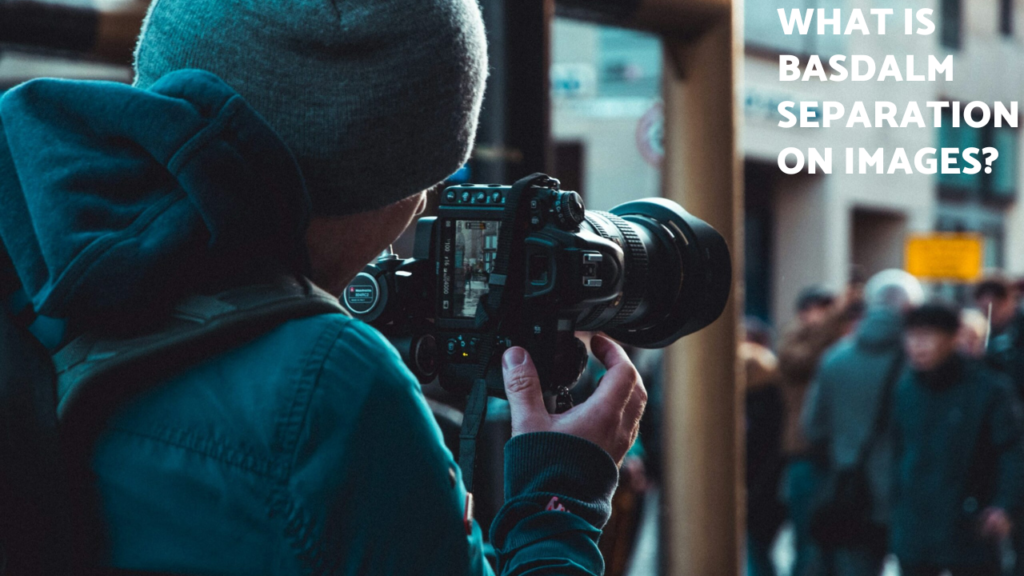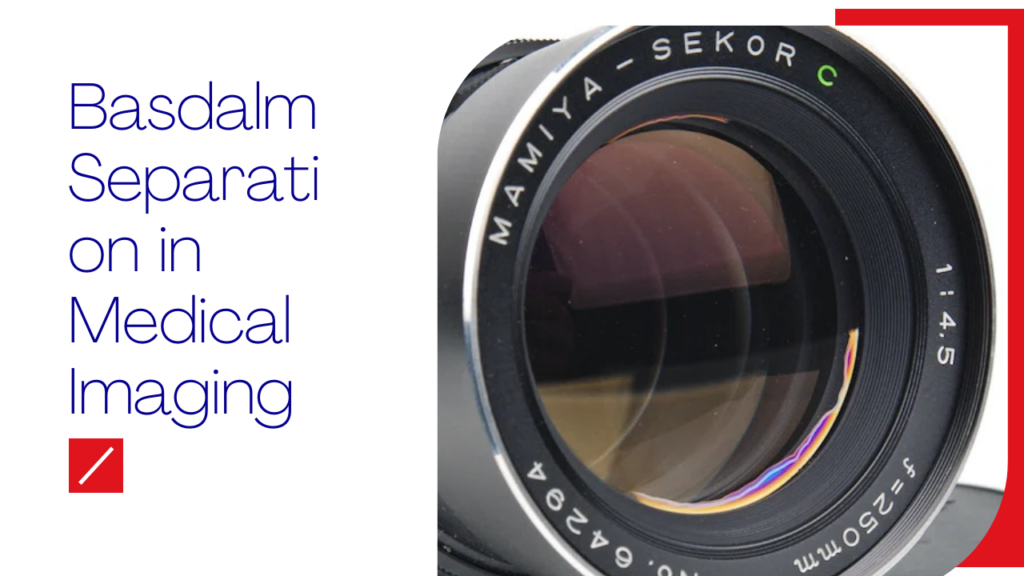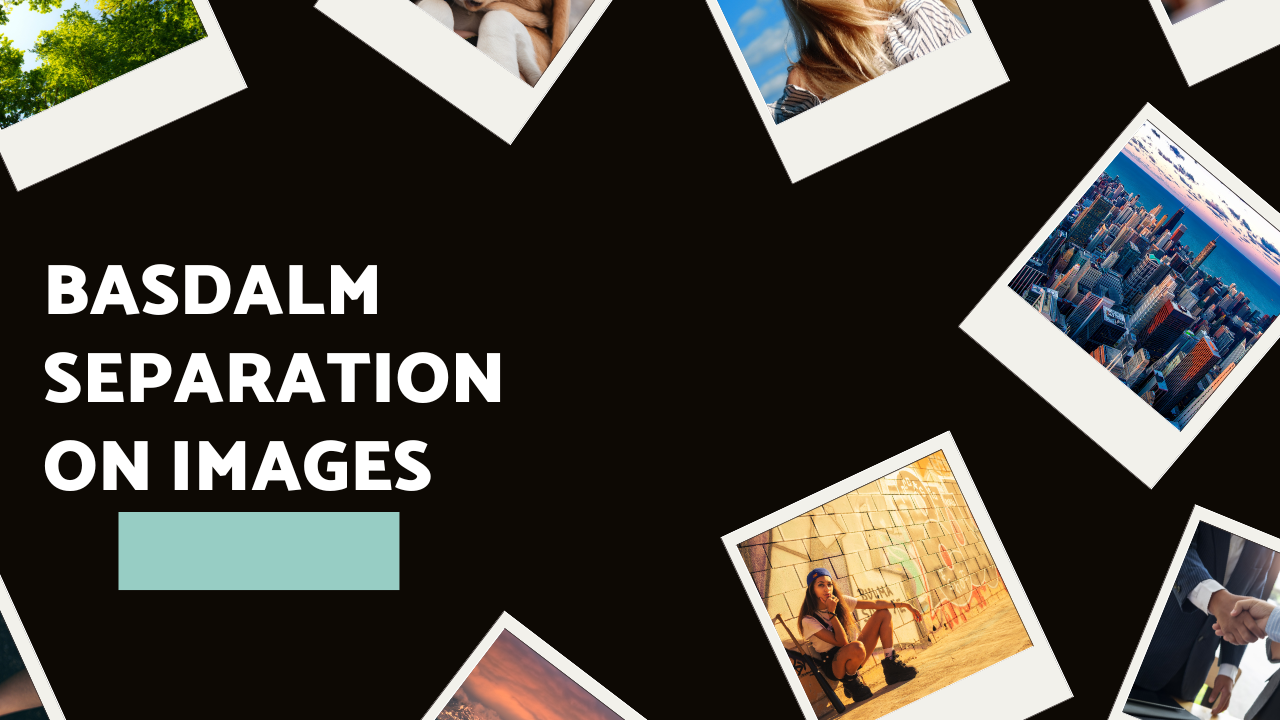Introduction
In today’s digital age, high-quality visual content has become a cornerstone for industries ranging from healthcare to artificial intelligence. Meeting the rising demand for advanced image processing techniques requires innovative methods. One innovative method is Basdalm Image Separation. This transformative approach addresses complex imaging challenges by enabling precise adjustments and maintaining overall image integrity.
Whether it’s enhancing diagnostic accuracy in medical imaging, boosting the aesthetic appeal of photographs, or streamlining machine learning processes, Basdalm Separation stands out for its versatility and effectiveness. Unlike conventional image editing methods that risk degrading other image elements, Basdalm Separation offers unparalleled precision and control, opening up new possibilities for industries reliant on high-quality visuals.
Table of Contents
What is Basdalm Separation on Images?

At its core, Basdalm Separation is a method that decomposes images into distinct components or layers, enabling targeted adjustments without affecting the rest of the image. This feature makes it indispensable for applications where precision and image integrity are paramount. For example, in artificial intelligence, where image data plays a vital role in training algorithms, Basdalm Separation helps simplify complex visuals, allowing machines to focus on specific attributes such as color, texture, or contrast.
Benefits of Basdalm Separation on Images
Enhanced Precision: Isolating individual components ensures that adjustments are localized and precise.
Improved Image Quality: Allows detailed edits while preserving the original details and overall image integrity.
Versatility Across Industries: From photography to medical imaging and AI, this method adapts to diverse needs.
Facilitation of Machine Learning: Simplifies image data, making it easier for algorithms to learn and recognize patterns.
Step-by-Step Process of Basdalm Separation
To fully understand the power of Basdalm Separation on Images, let’s break down its process into manageable steps:
Image Decomposition
The first and most critical step in Basdalm Separation is image decomposition. This involves breaking down an image into its fundamental components, such as color channels (Red, Green, and Blue) or specific attributes like texture and contrast. By doing so, each element can be manipulated independently without compromising the rest of the image.
For instance, in a landscape photograph, Basdalm Separation allows you to isolate the sky, mountains, and foreground as separate layers. This separation offers the flexibility to:
Brighten the sky for a more vibrant look.
Enhance the contrast of the mountains to make them stand out.
Adjust the shadows in the foreground for added depth.
Component Analysis
Once the image is decomposed, the next step is analyzing each component. This involves examining individual layers to identify areas that need improvement, such as regions with high contrast or imbalanced colors. By studying each layer’s attributes, you can determine the best adjustments to enhance the overall image quality.
In industries like medical imaging, component analysis is crucial. It can highlight anomalies that might otherwise go unnoticed, improving diagnostic accuracy and patient outcomes.
Layer Separation
After analysis, the components are separated into distinct layers. Each layer represents a unique aspect of the image and can be edited independently. This step is where the real strength of Basdalm Separation shines. It allows:
Precision editing of specific areas without altering the rest of the image.
Application of unique effects to different layers.
Customization of lighting, sharpness, or color balance for each layer.
For example, in portrait photography, you can:
Enhance lighting for a dramatic effect.
Ensure the subject’s natural skin tone is preserved.
Adjust the background to create better depth and focus.
Recomposition
The final step in Basdalm Separation is recomposition, where the edited layers are merged back into a cohesive whole. This step ensures that all enhancements blend seamlessly, resulting in a polished, high-quality image. The recomposed image retains all original details but with significant improvements in clarity and focus.
Whether used for a professional photoshoot, a machine learning dataset, or a detailed medical scan, recomposition delivers a final product that meets the highest standards of quality and precision.
Applications of Basdalm Separation
Basdalm Separation on Images is a game-changer across various fields:
Healthcare: Enhances medical imaging for better diagnostics and treatment planning.
Photography: Allows photographers to make precise adjustments without compromising image quality.
Artificial Intelligence: Simplifies image datasets, enabling algorithms to learn and process data more effectively.
Graphic Design: Provides designers with advanced tools to create visually compelling content.
The Role of Basdalm Separation in Modern Imaging
As digital technology continues to advance, the importance of basdalm separation on images has grown exponentially across industries. This innovative technique addresses numerous challenges associated with achieving high-quality image processing, offering transformative solutions in fields such as medical imaging, photography, design, artificial intelligence, and media production. Let’s delve into the diverse applications of this technology and explore its wide-ranging impact.
Basdalm Separation in Medical Imaging

In the realm of healthcare, basdalm separation on images has emerged as a game-changer for enhancing diagnostic accuracy. Medical imaging methods like MRI and CT scans produce intricate visuals of the human body, but interpreting these images can sometimes be daunting due to their complexity. Basdalm separation offers a solution by isolating specific layers within these scans, allowing medical professionals to focus on critical details.
For instance, when analyzing MRI scans, separating individual tissue layers can provide a clearer view of abnormalities such as tumors, fractures, or infections. By isolating these elements, radiologists can detect health issues with heightened precision. This capability not only accelerates the diagnostic process but also significantly improves treatment outcomes, potentially saving lives. The technique’s ability to enhance clarity and accuracy is revolutionizing how medical practitioners approach complex cases.
Applications in Photography and Design
In photography, precision is paramount. Even the most skilled photographers often rely on post-processing to refine their images. Basdalm separation on images enables photographers to adjust elements like lighting, contrast, and color balance with meticulous precision, ensuring the final output reflects their artistic vision.
Graphic designers gain significant advantages from utilizing this approach. Whether working on promotional materials, digital illustrations, or product packaging, designers require the flexibility to manipulate specific elements without compromising the integrity of the overall design. Basdalm separation allows designers to:
Isolate colors for selective adjustments.
Add textures or effects to specific areas.
Ensure seamless blending across different layers.
This level of control makes the creative process more efficient, enabling designers to produce visually compelling results that captivate audiences.
Enhancing Machine Learning and AI
As machine learning and artificial intelligence (AI) technologies continue to evolve, their reliance on high-quality image data becomes increasingly evident. Basdalm separation on images plays a pivotal role in preparing visual data for AI training, allowing machines to better understand and interpret complex visuals.
For example, in facial recognition systems, basdalm separation isolates critical features like eyes, nose, and mouth, enabling algorithms to identify faces with exceptional accuracy. Similarly, in object detection, this technique breaks down complex scenes into distinct components, making it easier for machines to recognize and classify objects. By simplifying image data into manageable layers, basdalm separation accelerates the development of smarter AI systems capable of performing tasks with greater precision.
Transforming Film and Media Production
The film and media industry relies heavily on post-production editing to create captivating visuals. From blockbuster movies to viral advertisements, every detail matters. Basdalm separation on images provides unparalleled flexibility during the editing process, enabling creators to make targeted adjustments to lighting, color grading, and special effects.
Consider a movie scene involving a fantastical landscape. Basdalm separation allows editors to:
Separate actors from the background.
Add intricate special effects without disrupting the original footage.
Adjust lighting and shadows for a more realistic appearance.
What Is Basdalm Separation on Images?
Basdalm Separation on Images involves decomposing an image into multiple layers, allowing detailed manipulation of individual components. This technique is invaluable for tasks like enhancing photographs, creating complex designs, diagnosing medical conditions, and training machine learning models. With the right tools, you can bring your creative and technical visions to life.
Top Tools and Software for Basdalm Separation on Images
Let’s dive into some of the best tools to help you master Basdalm Separation on Images, from beginner-friendly platforms to advanced professional-grade software.
Adobe Photoshop
A gold standard in image editing, Adobe Photoshop remains a powerhouse for professionals. Its advanced layer-based editing tools make it ideal for precise Basdalm Separation. Key features include:
Layer decomposition for detailed edits.
Adjustable blending options to enhance image clarity.
A wide array of plugins and tutorials for deeper learning.
While Photoshop’s extensive features cater to seasoned users, beginners can also leverage its intuitive interface to start experimenting.
GIMP (GNU Image Manipulation Program)
For those seeking a free yet powerful alternative, GIMP is a go-to choice. This open-source software provides robust functionality for Basdalm Separation on Images without any cost. Key highlights:
Full support for image decomposition and editing.
Customizable interface and community-driven plugins.
Comprehensive tutorials available online for easy learning.
With its strong community support, GIMP is perfect for hobbyists and professionals who prefer cost-effective solutions.
MATLAB
When precision is paramount, MATLAB delivers unmatched results. Frequently used in fields like medical imaging and artificial intelligence, it excels in complex image manipulation tasks. MATLAB’s advantages include:
Advanced algorithms for layer-based decomposition.
High-level control over image data for scientific research.
Applications in AI, medical diagnostics, and engineering.
Although it is designed for technical users, its precision makes MATLAB indispensable for professionals exploring Basdalm Separation on Images.
Affinity Photo
A budget-friendly alternative to Photoshop, Affinity Photo combines affordability with professional-grade features. Designed with photographers and graphic designers in mind, it offers:
Comprehensive tools for Basdalm Separation.
A clean and user-friendly interface.
Advanced editing capabilities at a fraction of the cost of other premium tools.
Whether you’re creating stunning visuals or experimenting with image layers, Affinity Photo provides a balanced mix of functionality and cost-effectiveness.
Why Choose Basdalm Separation on Images?
The technique of Basdalm Separation on Images offers numerous benefits across various domains:
Precision: Decompose and manipulate individual layers for unparalleled accuracy.
Flexibility: Apply the method to photography, medical imaging, AI, and more.
Creativity: Unleash innovative designs and effects through detailed control.
FAQs for Basdalm Separation on Images
What is Basdalm Separation on Images?
Basdalm Separation on Images is a technique that decomposes an image into multiple layers or components, enabling precise editing and manipulation of individual elements without affecting the overall integrity of the image.
How does Basdalm Separation benefit image processing?
This method enhances precision, improves image quality, and provides flexibility for tasks like photography, medical imaging, graphic design, and artificial intelligence by isolating specific components for detailed adjustments.
What industries benefit the most from Basdalm Separation on Images?
Industries like healthcare, photography, AI, graphic design, and media production gain significant advantages due to the method’s ability to enhance clarity, facilitate targeted edits, and streamline image processing workflows.
What tools can be used for Basdalm Separation?
Popular tools include Adobe Photoshop, GIMP, MATLAB, and Affinity Photo. These platforms offer a range of features to support layer decomposition, advanced editing, and precision in image manipulation.
How does Basdalm Separation improve medical imaging?
By isolating individual layers in medical scans like MRIs or CTs, Basdalm Separation enhances diagnostic accuracy and allows healthcare professionals to focus on critical details, improving patient outcomes.
Can beginners use Basdalm Separation tools?
Yes, tools like GIMP and Affinity Photo offer beginner-friendly interfaces, while platforms like Photoshop provide tutorials to help users learn advanced techniques.
How does Basdalm Separation aid machine learning?
Basdalm Separation simplifies complex image data by breaking it into manageable layers, enabling AI algorithms to focus on specific attributes like texture, color, or shape for improved learning and recognition accuracy.
Conclusion
Basdalm Separation on Images represents a revolutionary approach to image processing, providing unparalleled precision and versatility across various industries. By enabling detailed manipulation of individual components, this technique ensures enhanced image quality and integrity, making it an indispensable tool for professionals in healthcare, AI, photography, and media production.
Whether you’re a photographer striving for perfection, a medical professional aiming to improve diagnostics, or a developer working with AI, Basdalm Separation opens up new possibilities. Embrace this transformative technique to elevate your work and meet the ever-growing demands of today’s digital world.
For any kind of updates please visit Mywape



